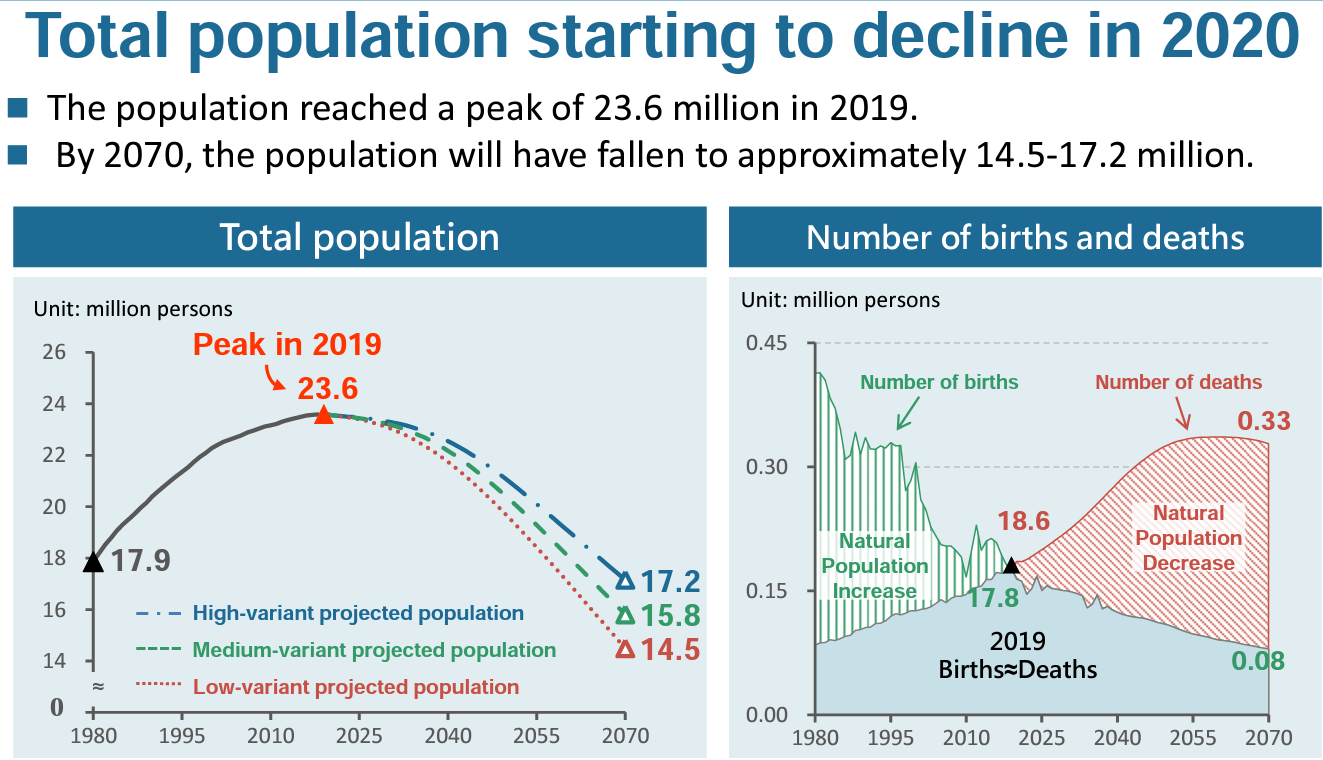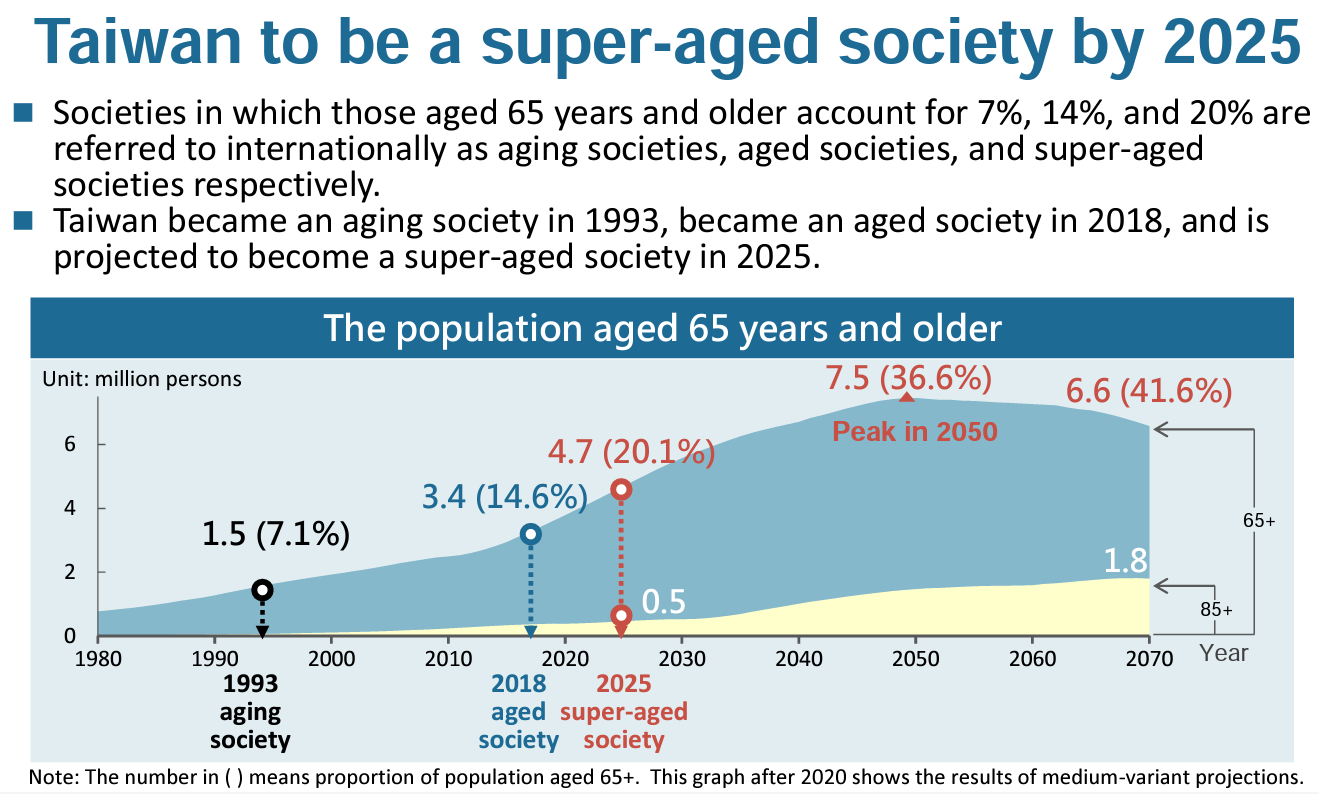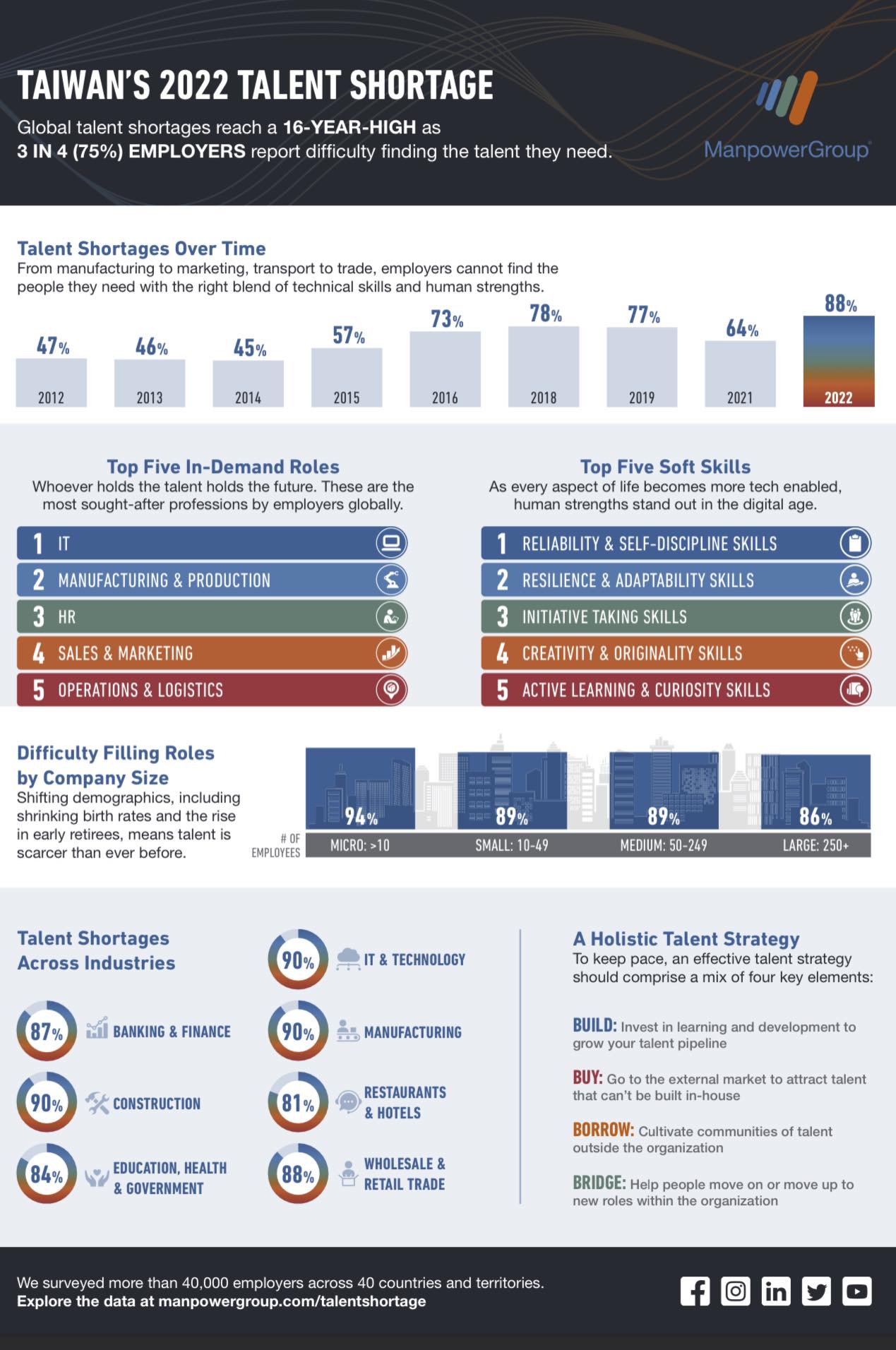Rethinking immigration to halt a growing economic security crisis

Source:Ming-Tang Huang
In this op-ed, David Chang tackles Taiwan's imminent demographic challenge, a matter of urgent concern. They delve into the aging population issues in Taiwan, dissecting the factors that underlie this bleak perspective.
Views
Rethinking immigration to halt a growing economic security crisis
By David Changweb only
Dear Mr. President, Taiwan is in urgent need of more people.
Please allow me to begin by impressing some facts of which you may already be aware. Since 2020, Taiwan’s population has started down a projected path of decline. For three consecutive years now, the population has not only been dropping due to lower fertility rates, but also aging due to increased life expectancy.
 Source: “Population Projections for the Republic of China (Taiwan): 2020-2070”, Department of Human Resources Development, National Development Council, page 12.
Source: “Population Projections for the Republic of China (Taiwan): 2020-2070”, Department of Human Resources Development, National Development Council, page 12.
By 2025, the National Development Council (NDC) projects that Taiwan will become a super-aged population, meaning that more than 20% of its population will be aged 65 years and older, placing an ever-increasing burden on Taiwan’s economic development and social systems. And, in 2050, the NDC has projected that Taiwan will become one of the oldest countries in the world when the share of the elderly reaches 41.4 percent of the population.
 Source: “Population Projections for the Republic of China (Taiwan): 2020-2070”, Department of Human Resources Development, National Development Council, page 16.
Source: “Population Projections for the Republic of China (Taiwan): 2020-2070”, Department of Human Resources Development, National Development Council, page 16.
The effects are already being felt. According to a recent survey by the ManpowerGroup (萬寶華), 88% of employers across industries in Taiwan at the end of 2022 reported experiencing a shortage in needed talent, an increase from 77% in 2019. Taiwan’s economic growth is not only on a diminishing trajectory, but the country’s security is also increasingly at risk due to this attrition of people.
 Source: “Taiwan’s 2022 Talent Shortage”, ManpowerGroup
Source: “Taiwan’s 2022 Talent Shortage”, ManpowerGroup
A diminishing and aging population will have the following main effects:
-
A shrinking workforce for economic development
-
A shrinking consumer market and economy
-
An increasing diversion of talent and resources to care of the elderly
-
A shrinking pool of able-bodied individuals for national defense strategies
This phenomenon is not unique to Taiwan, as cultural perspectives and values on family, child-rearing, and personal independence change around the world, spurred on by economic uncertainty and technological development. And, in the post-pandemic period, countries and regions around the world have been responding by intensifying their efforts to attract and retain foreign workers in a “global war for talent”, offering various incentives and loosening immigration policies. Amidst this competition and the uncertain geopolitical situation it faces, the questions that Taiwan needs to be honestly and urgently asking itself are:
-
What does it offer that can attract the talent and resources it needs to not only sustain and develop existing industries, but also establish it as a leader in new ones?
-
Is the domestic environment competitive and livable enough to retain and cultivate the talent it needs for long-term growth, sustainability, and innovation?
Unfortunately, low salary levels, work culture differences, and lack of career development opportunities continue to be among the most common reasons turning so-called “foreign professionals” away from considering Taiwan a serious destination for long-term development. In turn, domestic companies often find it challenging to overcome language and cultural barriers to effectively utilize these foreign professionals.
Approaches to immigration need to be reexamined. As of 2022, Taiwan’s total population stands at close to 23.3 million, with the total immigrant population of around 805,000 people making up approximately only 3.46%. Drawing from official statistics from the Ministry of Labor, around 725,000 immigrants are categorized as migrant laborers and caretakers, making up 90.1% of the immigrant population and 3.1% of the entire Taiwan population. From this, the white-collar or “foreign professional” population, stands at less than 79,000, making up less than 9.9% of the entire immigrant population and less than 0.3% of the entire Taiwan population. A majority of this demographic is English teachers – most of whom are not teachers by profession but use English teaching as the easiest immigration path to reside in Taiwan.
Such a minority population of immigrants has understandably created challenges in understanding the diverse experiences of the international community and in turn, what it takes to develop and implement an attractive “internationalized” environment.
The gaps become apparent when looking closely at the level of inclusion of immigrants in domestic policy. For example, in March this year, my organization Crossroads launched a campaign to advocate for the rights of vulnerable immigrants to apply for a disability certification, official recognition of a physical or mental disability. Currently, only Taiwanese citizens and Japanese nationals are allowed this certification. Without this certification, however, tax-paying immigrants and their children, who become disabled due to aging, an accident, disease, or genetic condition are denied services and relief, such as the ability to hire migrant homecare, apply for economic relief in bearing costly medical services and equipment, enroll at special education schools, use accessible services, obtain a disabled parking permit, and more, simply because they do not have official “proof” of their disability.
However, this issue provides just a glimpse into the gap between the intention and realities of national efforts to attract talent: How can Taiwan expect to convince foreign talent to invest in it, if it’s not willing to care for them and their families while they are here?
In our discussions on this and other issues, it is too often that we hear from policymakers, local community members, and government officials alike that they never knew issues like these existed. The common perspective of so-called “foreign professionals” in Taiwan continues to remain simply of English teachers partying at bars, while the relationship with so-called “migrant workers” continues to be plagued by what can logically be defined as institutionalized discrimination. However, according to national (5.1%) and global proportions (15%) of disabled individuals, it can be estimated that there are between 40,000 and 176,000 disabled foreign residents in Taiwan being systematically ignored and denied official recognition via a Disability Certification.
As the country ramps up its efforts to attract and retain talent, it is consistently surprising to learn that such glaring holes in basic protections can exist. A shift in perspective among Taiwan policymakers will be required to view immigrants as not just “talents” to fill gaps in labor, but also as people with needs for representation, integration, and equality.
Taiwan is increasingly finding itself at a crossroads between the following paths:
-
Open up to become an internationally connected and engaged country with a diverse, inclusive, and equal society for the long-term
-
Close up to maintain status quo and protect local identity, culture, and interests for the short-term
This decision is ultimately up to the Taiwanese people, as it should be. However, it should be kept in mind that the transformation of any environment requires generational change gradually brought about by holistic planning and implementation of long-term policies, bolstered by active engagement between communities. Commitment and time are required.
To a relatively young country still grappling to terms with questions around its own national identity, the issue of immigration and integration are understandably difficult, requiring much time and soul searching. And, to be fair, there have been many positive steps forward over the years, such as the launch of the Employment Gold Card and the Bilingual 2030 initiative.
However, the establishment of healthy talent circulation for the continued growth and development of Taiwan requires an environment with comprehensive and well-implemented policies and programs that fully utilize and promote Taiwan’s advantages, rather than simply imitating those of other countries. More bridges for engagement with the international community are needed for solutions at every aspect of talent circulation: from attraction to retention to integration to cultivation.
Taiwan’s fate is inextricably tied with the international community. And, in this age of vanishing borders, it is time to rethink this relationship. We look forward to your leadership on this in the years to come.
(This piece reflects the author's opinion, and does not represent the opinion of CommonWealth Magazine.)
The CommonWealth English website and CommonWealth Magazine's Independent Opinion (獨立評論) continue to accept op-eds for the new president. Please follow this link for more info.
About the author:
David Chang is the founding secretary-general of Crossroads 社團法人台灣全球連結發展協會, a national-level non-profit organization actively connecting Taiwan with international communities and resources, and the founder and CEO of Wordcorp 一元翻譯, an online translation platform. With a background in public service and law in the United States, his career has been focused on bridging social, economic, and cultural divides. David now provides strategic consulting for central and local government entities regarding the holistic planning and establishment of healthy talent circulation - from attraction to retention to cultivation.
Have you read?
- Why Taiwan thinks it's a poor loser when it’s actually a success
- What is DEI, and How to Uphold its Values in Your Project
Uploaded by Ian Huang






